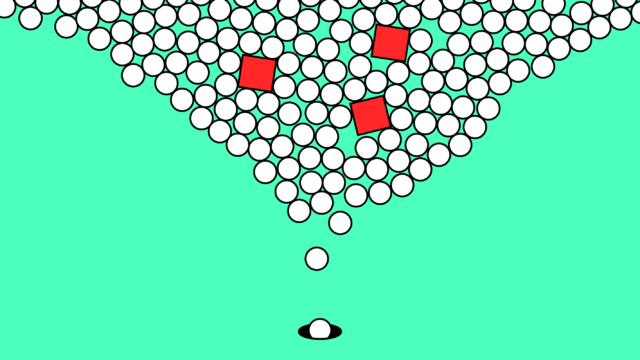Web design glossary of terms
We thought it might be useful to put together a glossary of commonly used web-related terms. Here’s a good selection to get you going and have you speaking like digital media experts in no time:
A
Above the fold: The visible portion of your screen when a page first loads. Generally taken to mean the first 600- 1000 pixels of a page
Accessibility: In the context of a Web site, accessibility refers to the degree to which that Web site is usable by people with disabilities including visually impaired people requiring screen readers or custom style sheets; people with hearing impairments and those using browsers with no sound; physically impaired people; and colour blind people
AdWords: The sponsored links that appear on Google search result pages above and to the right of the main organic search results
AdSense: This is Google’s advertising system that enables web site owners to easily display advertisements on their web site. The advertisements are automatically displayed based on the content of the web page.
Affiliate marketing (Affiliate advertising): Affiliate marketing provides a channel for website owners to earn income from their advertisers sales by proxy. When a visitor completes an agreed transaction on the advertiser’s site (such as signing up to a scheme or completing a purchase), the owner of the original site receives an agreed commission payment.
Analytics (Google): Google provide a free statistics package called Google Analytics based on a software package called Urchin. Web site analytics measures information such as the number of visits (visitors) to a web site; page views; which countries the visitors are from; what percentage of your visitors return to your web site and which keywords and phrases they are using to find you.
Algorithm: At the heart of Google success lies a carefully guarded formula for ranking websites. This algorithm weighs up factors as diverse as the number of inbound links, the content of the site itself and it’s build quality. More perplexing however are the plethora of other factors that frankly, even as professional marketeers we can only guess at.
ASP (Assisted Server pages): See ASP.NET
ASP.NET: a web application framework developed and marketed by Microsoft, that programmers can use to build dynamic web sites and web applications. ASP.NET takes an object-oriented programming approach to Web page execution. Because the code is run straight from the processor, pages load much faster than classic ASP pages, where embedded VBScript or JScript had to be continuously interpreted and cached.
B
Backlinks: A backlink is a link coming from another website to your own. The number and quality of backlinks that your site has can affect your search engine placement results, as some search engines, such as Google, place a significant weight to the backlinks of a site.
Bad neighbourhood: A bad neighbourhood on the Web is a website that uses dirty tricks (black hood) to try and increase their site’s rankings or install malware or other harmful software on user’s devices.
Below the fold: The area of your web page (particularly on the home page) that is initially out of site (beyond around 600-1000 pixels down on the page)
Blog: A blog (a contraction of the term weblog) is a type of website containing regular entries of commentary, descriptions of events, or other material such as graphics or video. Entries are commonly displayed in reverse-chronological order. “Blog” can also be used as a verb, meaning to maintain or add content to a blog. Increasingly, blogs are used by commercial organisations in place of more traditional news areas. Blogs are highly effective at being picked up by Google and other search engines and as such should form an important part of your Search Engine Optimisation strategy. The ability for readers to leave comments in an interactive format is an important part of many blogs. At Cite, our preferred blogging software package is WordPress as it provdes opportunities for customisation and integration with other systems.
Bounce rate: Expressed as a percentage, this is the frequency that visitors to a site leave immediately after arriving (often the realiation that this is not the site they were after). s a term used in web site traffic analysis. It essentially represents the average percentage of initial visitors to a site who “bounce” away to a different site, rather than continue on to other pages within the same site. The formula used to calculate bounce rate is: Bounce Rate = Single Page Access/ Entries
Bookmarks: Microsoft’s Internet Explorer calls these ‘Favourites’ which for once might be a better name as they make to references to favourite websites on the internet.
Breadcrumb: A navigation system on web pages that help orientate the user to the home page. For example: Home > Product catalogue > Product name
Browser: The application used on your PC, Mac PDA or mobile phone to access and view web pages. Common browsers include Microsoft’s Internet Explorer, Firefox; Safari; Opera and Chrome.
C
Cascading style sheets (CSS): Designed primarily to enable the separation of document content (written in HTML or a similar markup language) from document presentation, including elements such as the colors, fonts, and layout. This separation can improve content accessibility, provide more flexibility and control in the specification of presentation characteristics, enable multiple pages to share formatting, and reduce complexity and repetition in the structural content (such as by allowing for tableless web design).
Comments: Comments provide an opportunity for content authors to receive feedback from other website users and readers. Comments are widely used on blogs and other social network media such as Facebook.
Click: The act of clicking with a mouse or other pointing device on an active link within a website or email
Client-side: Interactivity that takes place on the user’s device within a webpage. An example of a client-side interaction is a rollover (typically triggered when choosing a navigation option). Client-side scripting languages include JavaScript and Flash.
CMS (Content management system): This is a system used to manage the content of a Web site and typically consists of two elements: the content management application (CMA) and the content delivery application (CDA). The CMA element allows the content manager or author, to create, edit or modify web site content without needing the expertise of a Webmaster. The CDA element uses and compiles that information to update the Web site. The features of a CMS system vary, but most include Web-based publishing, format management, revision control, and indexing, search, and retrieval.
Crawler: In the context of Search Engines, a crawler is is a program or automated script that browses the World Wide Web in a methodical manner in order to provide up to date data to the particular search engine. Crawlers go by many different names, such as web spiders and robots the process is by and large, the same. A set of website URLs that need to be visited, called seeds, are identified and then the search engine crawler visits each web page and identifies all the hyperlinks on the page, adding them to the list of places to crawl. URLs from this list are re-visited occasionally according to the policies in place for the search engine. The policies of the search engine can be different for each search engine.
CTR (Click through rate): The frequency that which users click on links. Usually expressed as a percentage of clicks-per-view
CPC (Cost per click): The terms pay-per-click (PPC) and cost-per-click (CPC) are often used interchangeably. When used as distinct terms, PPC indicates payment based on click-throughs, while CPC indicates measurement of cost on a per-click basis for contracts not based on click-throughs. For example, consider a campaign where payment is based on impressions, not clicks. Impressions are sold for $10 CPM with a click-through rate (CTR) of 2%. 1000 impressions x 2% CTR = 20 click-throughs
D
Database: A structured collection of records or data that is stored in a computer system such on a web server. In the context of web design, the most common databases are the open-source MySQL and Postgres; and Microsoft’s propriety options, Access and SQL Server.
Deep linking: External web links that link directly within the target websitesite, for instance to specific product pages.
Directories: A unique name that identifies an organisation on the Internet.
DHTML (Dynamic Hypertext markup language): An enhancement to standard HTML that enables web pages to be more interactive
Domain name: a unique name that identifies an organisation on the Internet.
DNS: Domain Name Server and associated recorA network of DNS servers direct users to your website when your web address is entered
Digital PR (dPR): Also known as Online PR is about influencing the media, communities or stakeholders online instead of through traditional channels such as print, radio and TV. In addition to communication, dPR is about building and managing brand reputation online and crucially, building links. The tools we use include:
- Extending communication through blogs and social networks
- Publishing extended information though white papers, knowledge bases and wikis
- Audio and video podcasting
- Crisis management though community response (often through forums and action group websites)
- SEO (Search engine optimisation)
- Video and entertainment based viral marketing
- Media resourcing (for online and traditional journalists)
- Article and content provision
- RSS feeds
E
Elastic layout, see also liquid layout: A page design that stretches to fill the width of the user’s browser frame.
Entry page: The page a user enters a site. This may be the home page, but if proper search engine optimisation has been conducted on the site, it may equally be a specific section, service or product page
E-commerce: Online retail. E-commerce (electronic commerce or EC) is the generic terms for buying and selling goods and services online, especially the World Wide Web. For online retail selling, the term e-tailing is sometimes used. E-commerce stores are effectively online shops, usually with a catalogue, shopping basket (cart); registration; checkout and payment processes. E-commerce stores may operate in isolation or they may dovetail into more a complex infrastructures involving stock control; order fulfillment; accounts and customer relations management (CRM) software. Often these more complex systems require database synchronisation. E-commerce engines (the software that drive e-commerce stores) can be bespoke or based on established software solutions. At Cite we support both, and have particular expertise using Z-cart; OsCommerce; Magento and JShop as well as extension and plugin based options for WordPress, Joomla, Drupal and other common CMS software.
Email marketing: The modern equivalent direct postal mail, email marketing provides an opportunity to communicate quickly and cheaply with a large customer database. E-Marketing is the quickest, easiest and most persuasive way to reach the maximum number of people in the shortest possible time. With proper email reporting software in place you can find out who’s opened your emails; forwarded them on and even which links they have clicked.
F
Facebook: The Social Network phenomena. Facebook started in 2004 as a college project by a couple of Harvard students as a means of keeping in couch with college friends. Since then it has expanded to 175 million active users worldwide. From a business persective, Facebook provides numerous opportunities for direct marketing, relationship building and digital PR.
Favicon: The small icon that appears next to a web address in your browser.
Favourites: see Bookmarks
Feed: A web feed (or news feed) is a data format used for providing users with frequently updated content. Content distributors syndicate a web feed, thereby allowing users to subscribe to it. Making a collection of web feeds accessible in one spot is known as aggregation, which is performed by an Internet aggregator. A web feed is also sometimes referred to as a syndicated feed.
Fixed width layout: as the name suggests, this refers to a website design whereby the width of the page is a specific size, determined by the Web designer regardless of the size of the browser window viewing the page. Fixed width layouts allow a designer more direct control over how the page will look in most situations. The alternative to a fixed width layout is a liquid (elastic) layout.
Firewall: a security system consisting of a combination of hardware and software that limits the exposure of a computer or computer network to unwanted access, from hackers and malignant software. A firewall is commonly used on local area networks that are connected to the internet.
Flash: Adobe Flash (previously called Macromedia Flash) is a multimedia platform originally acquired by Macromedia and currently developed and distributed by Adobe Systems. Since its introduction in 1996, Flash has become a popular method for adding animation and interactivity to web pages; Flash is commonly used to create animation, advertisements, and various web page components, to integrate video into web pages, and more recently, to develop rich Internet applications. Flash can manipulate vector and raster graphics and supports bi-directional streaming of audio and video. It contains a scripting language called ActionScript and can integrate with external data sources using XML. Several software products, systems, and devices are able to create or display Flash content, including Adobe Flash Player, which is available for most common web browsers, some mobile phones and other electronic devices (using Flash Lite). The Adobe Flash Professional multimedia authoring program is used to create content for the Adobe Engagement Platform, such as web applications, games and movies, and content for mobile phones and other embedded devices.
Font: A specific style (and size) of type within a type family. In traditional printing context there are literally thousands of fonts ranging from the formal to plain fun. Online the choice is more restrictive (to read properly, as web designers we must choose fonts which we know our users have on their PCs) and so tend to choose standard favourites such as Verdana, Aria, Trebuchet, etc.
Forum: aka Message board. People participating in an Internet forum can build bonds with each other and interest groups will easily form around a topic’s discussion, subjects dealt with in or around sections in the forum. Many forums are developed around a particular subject or interest group. From a marketing point of view, forums often provide a captive audience.
G
Google: Google search is a web search engine owned by Google, Inc., and is the most-used search engine on the Web. Google receives several hundred million queries each day through its various services. Google search was originally developed by Larry Page and Sergey Brin in 1997. As well as the original word-search capability, Google Search provides more than 22 special features, such as: weather forecasts, time zones, stock quotes, maps, earthquakes, movie showtimes, airports, home listings, sports scores.
A Google search-results page is ordered by a priority rank called “PageRank” which is kept secret to avoid spammers from forcing their pages to the top. Three key factors influnce where a site or page will appear within Google’s search results (in relationship to a given search):
- The technologies used to build the site (especially the accessibility of the site)
- The content quality and information architecture
- The popularity of the site (particularly regards to the quality of inbound link)
.htaccess:
HTML
HTTP
HTTPS
Hyperlink
IP address
Inbound links
Internet
Javascript
JPEG
Keywords
Keyword density
LAMP
Landing page
Linux
Liquid layout
Links
Link building
Link farm
Linked In
Meta tags
MySQL
MySpace
New media
Organic listing
Optimisation
Online Marketing
Open source
PHP
Pixel
Podcast
PR
Permalink
Rank
Reciprocal Link
Robot
robot.txt
ROI (Return of investment)
RSS
Search engines
Semantic markup
Server
Social networks
Spam
Spider
Sponsored links
Standards
Styles
Sitemap
Statistics
Tables
Tag
Typeface
Twitter
URL
Usability
Users
Validator
Visitor
W3C
Web standards
Word count
Word densityWordpress
White space
Web
Web 2.0
Web page
Web design
Webmaster toolkit
www
XML
XHTML
Yahoo!




